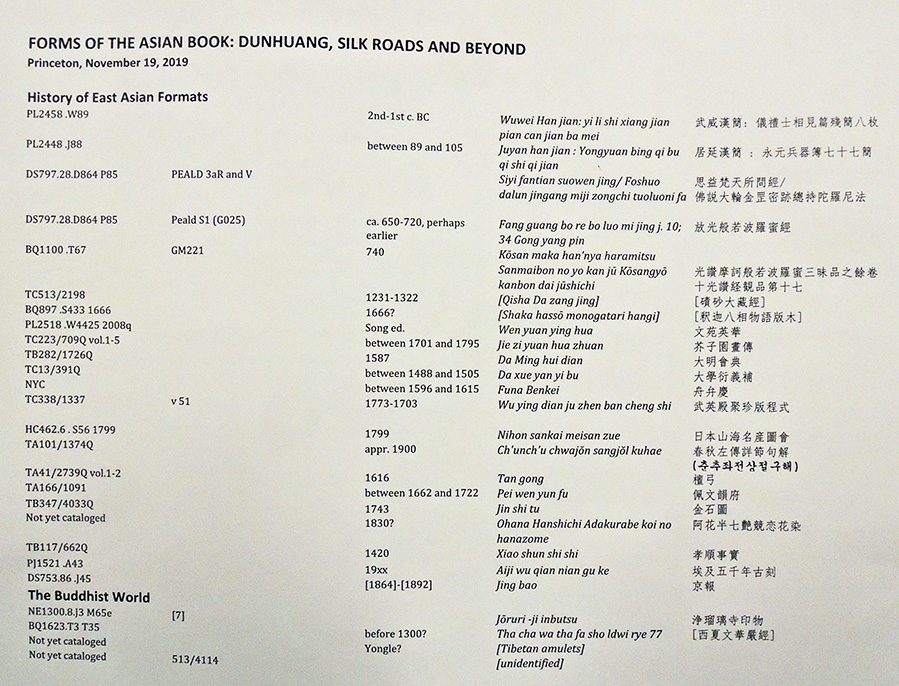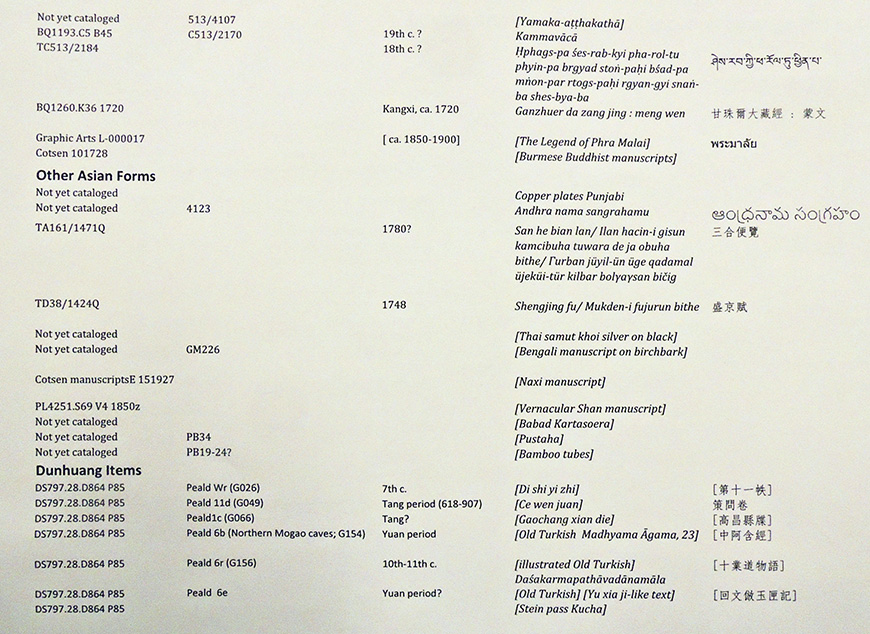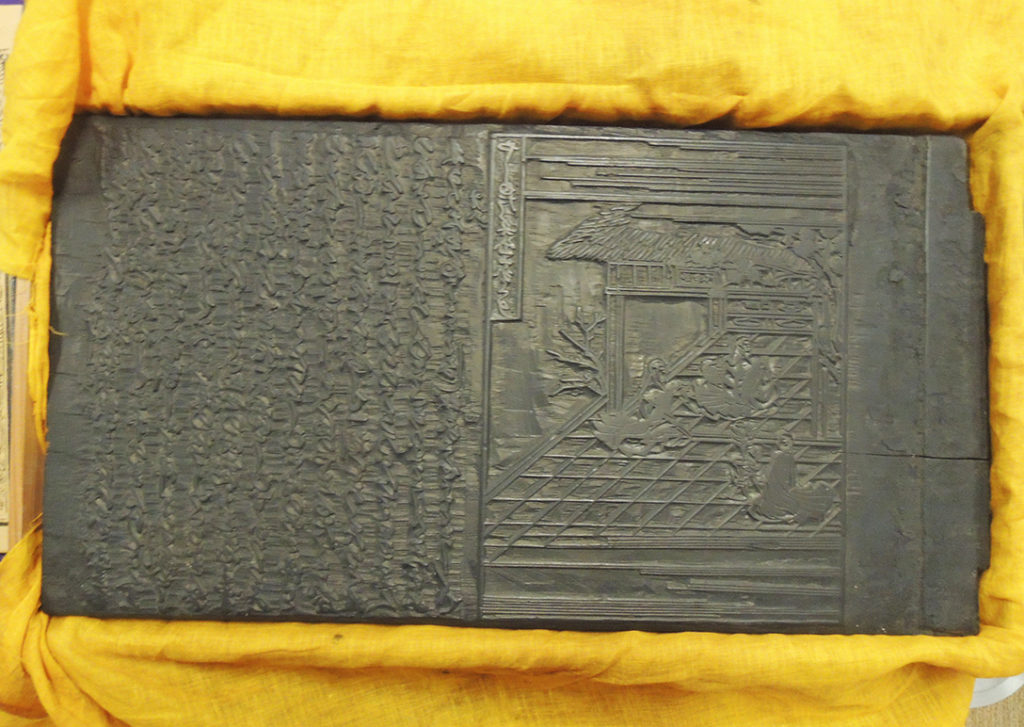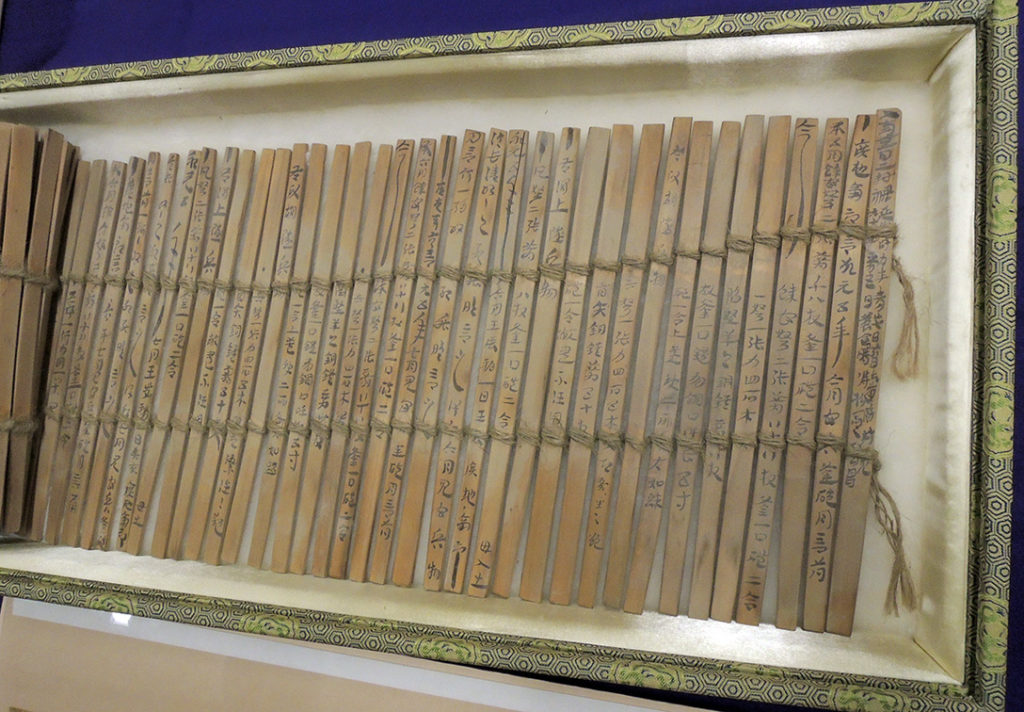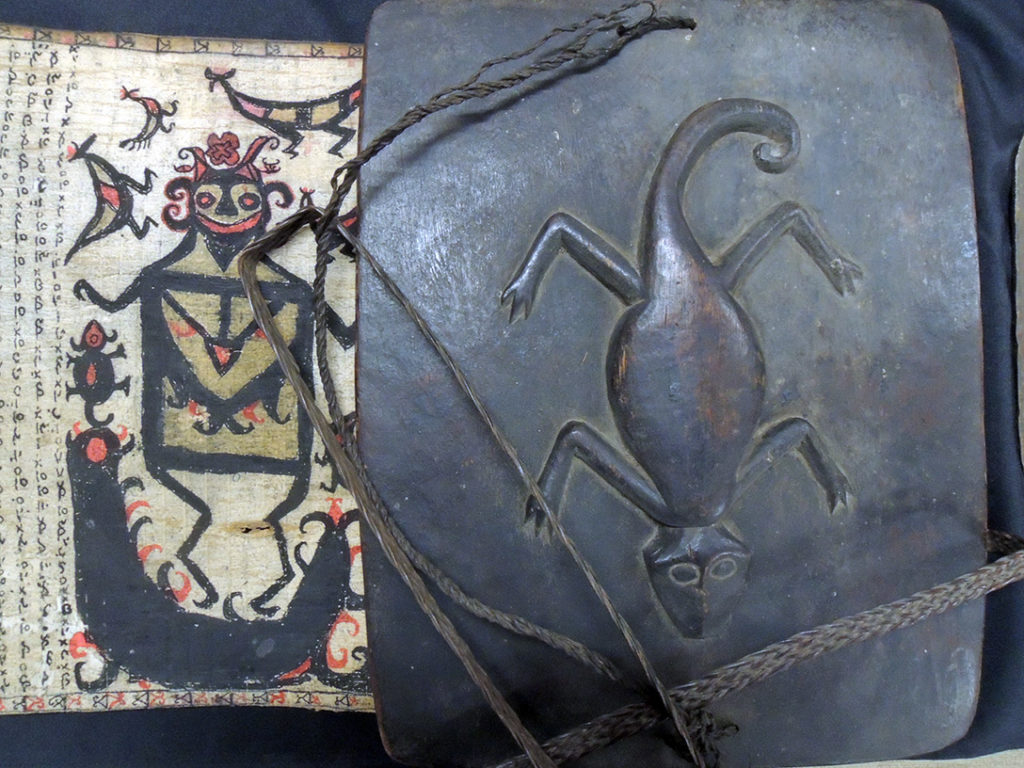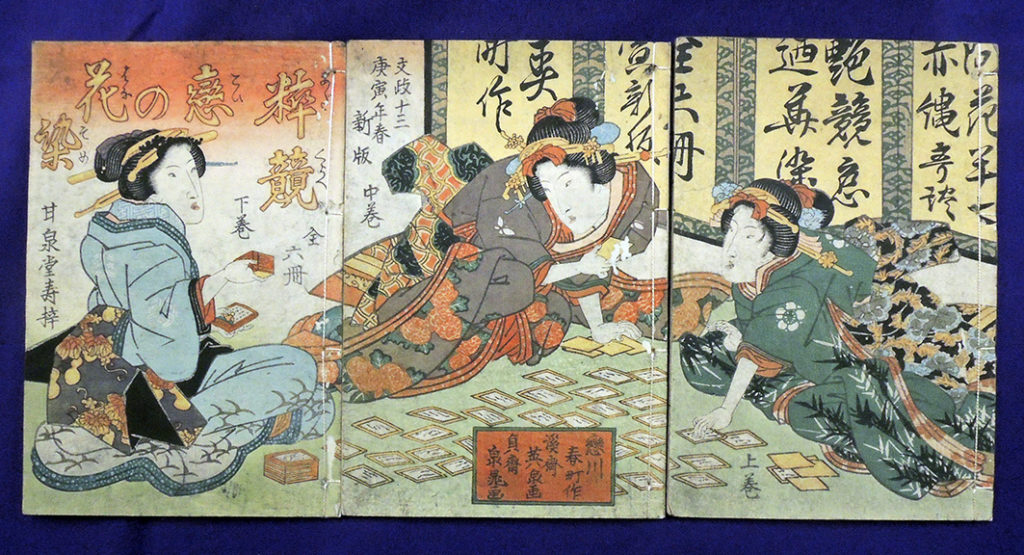Martin Heijdra, Director of the East Asian Library at Princeton University, welcomed members of the IAS/Princeton workshop “Formats of the Book in East Asia and Environs” to Firestone Library and the Institute for Advanced Studies this week.
Below is the complete list of treasures Martin pulled for the group, beginning with two rare facsimiles of the Bamboo and wooden slips (Chinese: 简牍; pinyin: jiǎndú) used in China before paper. Also included were spectacular examples of book formats from South East Asia and regions beyond China.
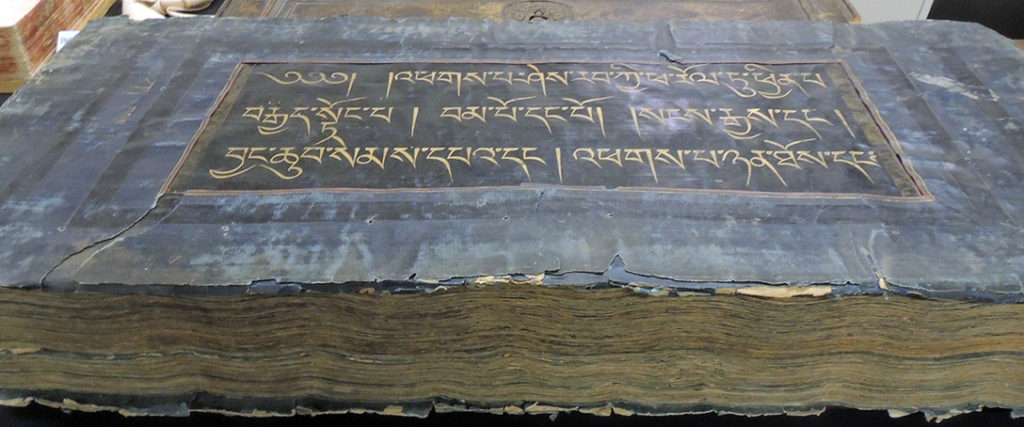
The overall aims of the project are listed as:
“The Book and the Silk Roads: Phase I” is a 2-year Mellon Foundation-funded project of the University of Toronto’s Old Books, New Science lab. The grant’s purpose is to challenge the triumphalist Western narrative of book history as a path of steps leading from the Christian codex to the Gutenberg press to the digital age. Instead, we seek to build and support a network consisting of scholars, curators, conservators, and scientists exploring significant developments in book technologies within a range of contexts, focusing particularly on occasions of cultural interchange or entanglement in the premodern world.

Amanda Goodman’s work on ephemeral documents from the Dunhuang cache has deeply inspired us, and we hope to build further points of connection with the community of Dunhuang researchers in the Princeton area. What stories can be told by exploring the varied formats and structures of the text-objects from the cache in Mogao’s Cave 17, or the recycled examination papers used as burial shoes in Turfan, now housed in Princeton’s East Asian Library collection? …
 Although most of us are not part of this distinguished group, we can still appreciate the marvelous books and manuscripts being studied. Here are just a few images without commentary.
Although most of us are not part of this distinguished group, we can still appreciate the marvelous books and manuscripts being studied. Here are just a few images without commentary.
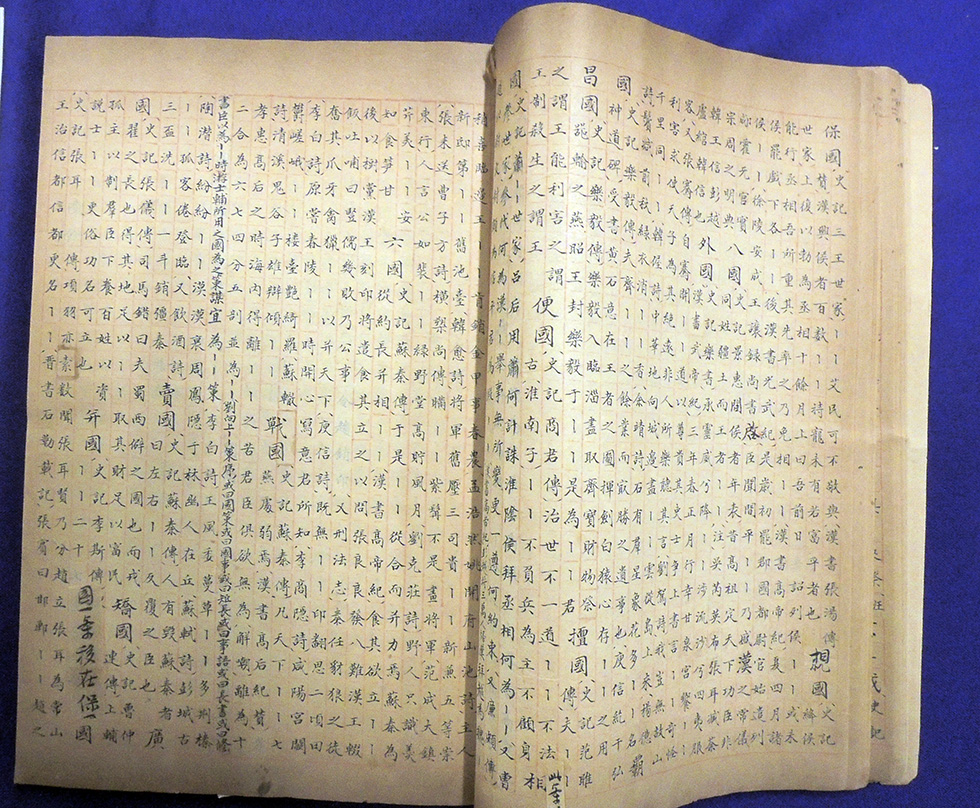 Note the corrections added to this manuscript by the author.
Note the corrections added to this manuscript by the author.



